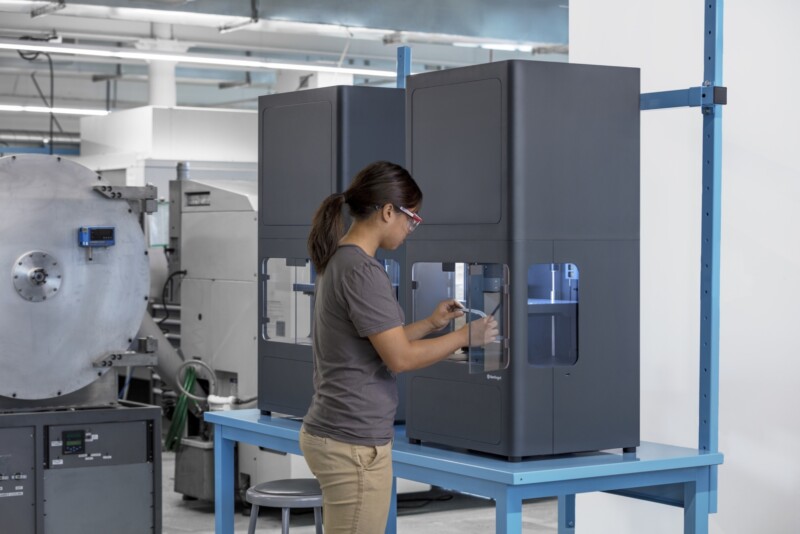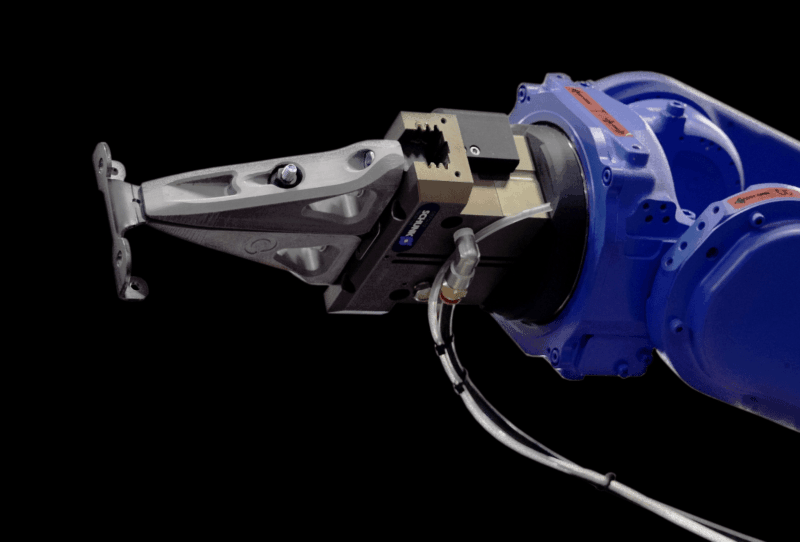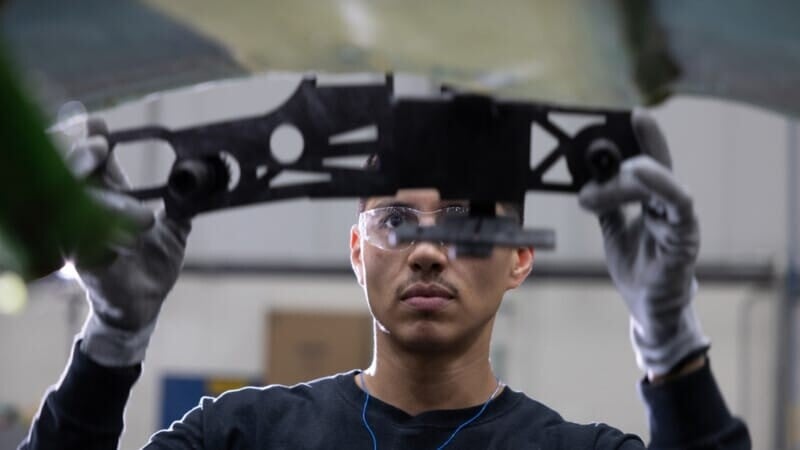
3D Printing and the Environmental Impact of Manufacturing
Manufacturing is a major source of carbon emissions. Learn what steps can we take as an industry to reduce our carbon footprints — and why sustainability is a win-win for both the environment and your bottom line.
Climate change is real and continues to be a hot topic in research, public policy, and cultural dialogue. What was once inconceivable — that human activity might impact something as incalculably vast as planet Earth itself — is now understood to be scientific fact.
The environmental impact of manufacturing plays a large role in climate change. Not just through energy consumed in production, but also transportation energy used to ship supplies and parts at various points in supply chains. Increasing numbers of organizations and consumers are prioritizing sustainable, environment-friendly business practices as a result.
Read this article for a contextual overview of climate change, why businesses benefit from environmentally conscious practices, how 3D printing more parts substantially reduces carbon emissions, and how two organizations are using Markforged 3D printers to build a more sustainable future.
An overview of climate change
Consequences of climate change caused by mass carbon emissions are well documented. Average temperatures are slowly but consistently increasing; weather patterns are becoming more extreme, with more pronounced droughts and harsher storms. Global warming is also melting more ice caps than ever, contributing to rising sea levels. Ecological ramifications of climate change include the destruction of fragile ecosystems and habitats: threatening long-term survival of countless species of living organisms and the planet’s overall biodiversity.
These translate to anthropological consequences. Extreme weather and droughts can harm crop yields and threaten food supplies around the world. Strong storms can cause loss of both property and human life. Rising sea levels also reduce the amount of habitable land: experts predict that coastal flooding will become a serious issue in the 2030s, potentially leading to displacement of coastal communities and resultant overcrowding.
Why does environmental impact matter for manufacturers?
The environmental impact of manufacturing. Factories consume quite a bit of energy. Engineering, production of goods, and transportation of parts across supply chains together account for a substantial portion of emissions contributing to climate change.
But what’s in it for the business? Businesses are increasingly recognizing that engaging in environmentally conscious practices creates tangible business benefits.
By reducing waste and energy consumption, sustainable manufacturing processes improve operational efficiency while making regulatory compliance easier. Sustainable business practices are also becoming the norm. As Harvard Business Review noted as far back as 2016, research has shown that consumers are more willing to pay higher prices for sustainably produced products and more likely to have brand loyalty. Deloitte research has found that investors, supply chain partners, and employees also favor environmentally-conscious organizations — with over half of 750 executives reporting in 2021 that “their environmental sustainability initiatives measurably boosted their corporate financial performance.”
The environmental impact of manufacturing and 3D printing: how does additive make a difference?

The short answer is yes — one key way manufacturers can have a less harmful impact on the environment is by additively manufacturing whatever components they can. Conventional supply chains incur huge carbon footprints through fossil-fuel-hungry logistics bridges.
3D printing reduces carbon footprints in a few different ways:
Less energy and material waste. The process of additive manufacturing itself has a far lower carbon footprint compared to subtractive processes. Additive manufacturing leads to far less waste — shapes of manufactured parts aren’t achieved through reduction of material, hollow infill structures cut down on even more material while preserving performance, and manufacturers can produce only what is needed.
No carbon-heavy supply chains. Considering fabrication alone, the carbon footprint of subtractive manufacturing is already significantly higher than that of additive manufacturing. However, the substantial negative carbon footprint of traditional manufacturing is compounded by the supply chain activities these processes require to deliver the product to the point of need. After the production of goods, the necessary transportation and logistics downstream produces a carbon footprint far higher than what fabrication itself produces. By providing versatile point-of-need fabrication, 3D printing cuts out the need for these multiple carbon-intensive steps — while also creating operational efficiency.


Examples of sustainable manufacturing in practice
1.) Greentown Labs and Transaera
Greentown Labs in Somerville, MA, is the largest climatetech incubator in North America, a community of innovators working towards changing the way the world powers itself. Success stories out of Greentown Labs include Sweetgreen, Form Energy, Via Seaparations, and Zwitterco. The next startup positioned to change the way we is Transaera. A startup spun out of MIT, Transaera is focused on building air conditioning systems that are environmentally friendly, energy-efficient, and affordable.
Air conditioning specifically is a major contributor to climate change. In most households, AC is the largest electricity usage source, and therefore produces the most carbon emissions. According to Ross Bonner, CTO of Transaera, AC use accounts for 4% of global carbon emissions — which is double that of the aviation industry, which sits at 2%. Considering the scale of AC usage around the world, even a moderate improvement in AC efficiency and waste reduction can make a substantial improvement in the global carbon footprint. Until recently, the way air conditioners work hasn’t changed much since it was invented in the early 1900s; but using a novel, moisture-grabbing material — a type of metal organic framework (MOF) — allows Transaera’s air conditioning systems to cool the air more efficiently.
Bonner cites access to Markforged 3D printers as one major upside to working out of Greentown Labs: “When you’re trying to change the game for any technology, there are a lot of technical obstacles to overcome. The way to overcome those is through constant iteration, constantly testing things, learning things, trying the next thing and improving.”
Compared to traditional manufacturing, additive consumes far less material during fabrication, as part shape is not achieved through reduction. Even compared to other 3D printers, Bonner states that Markforged helps Transaera manufacture their prototypes more sustainably, with less waste:
– Ross Bonner, CTO at Transaera“Markforged printers also don’t waste material and energy because they always produce the part that you designed — whereas with other 3D printers, there’s a lot of worry involved.”
Vestas
Vestas is a global wind energy leader based in Denmark. They design, manufacture, install, and service wind turbines. Vestas is the largest wind turbine manufacturer in the world, with turbines located in over 86 countries.
Out of the 100 most sustainable corporations, Vestas was ranked first in sustainability in an assessment of criteria such as carbon productivity, clean revenue, and clean investment.
The company is using additive manufacturing for sustainability in its goal of net-zero decarbonization by the year 2030, and plans to produce zero-waste wind turbines by 2040.
By implementing its direct digital manufacturing (DDM) program and storing over 2000 digital part files in the cloud, Vestas specialists will be able to print up-to-spec critical maintenance tools, turbine part prototypes, and turbine components to right where they need it from anywhere in the world.
Using the Digital Forge further improves Vestas’s carbon footprint by dramatically reducing use of shipping and freight across its supply chains — across all manufacturing activities, logistics are responsible for the majority of carbon emissions.
– Jeremy Haight, Principal Engineer for Additive Manufacturing & Advanced Concepts at Vestas“Our approach is end-to-end. We provide the physical article in near real-time to a variety of places. It’s the closest thing to teleportation I think you can get.” — Jeremy Haight, Principal Engineer for Additive Manufacturing & Advanced Concepts at Vestas

What is Additive Manufacturing? Understanding the Technology and its Impact

Additive Manufacturing Today: Why Additive, and Why Now?

Vestas
All of the blogs and the information contained within those blogs are copyright by Markforged, Inc. and may not be copied, modified, or adopted in any way without our written permission. Our blogs may contain our service marks or trademarks, as well as of those our affiliates. Your use of our blogs does not constitute any right or license for you to use our service marks or trademarks without our prior permission. Markforged Information provided in our blogs should not be considered professional advice. We are under no obligation to update or revise blogs based on new information, subsequent events, or otherwise.
不错过任何一篇文章
订阅以在您的收件箱中获取新的 Markforged 内容